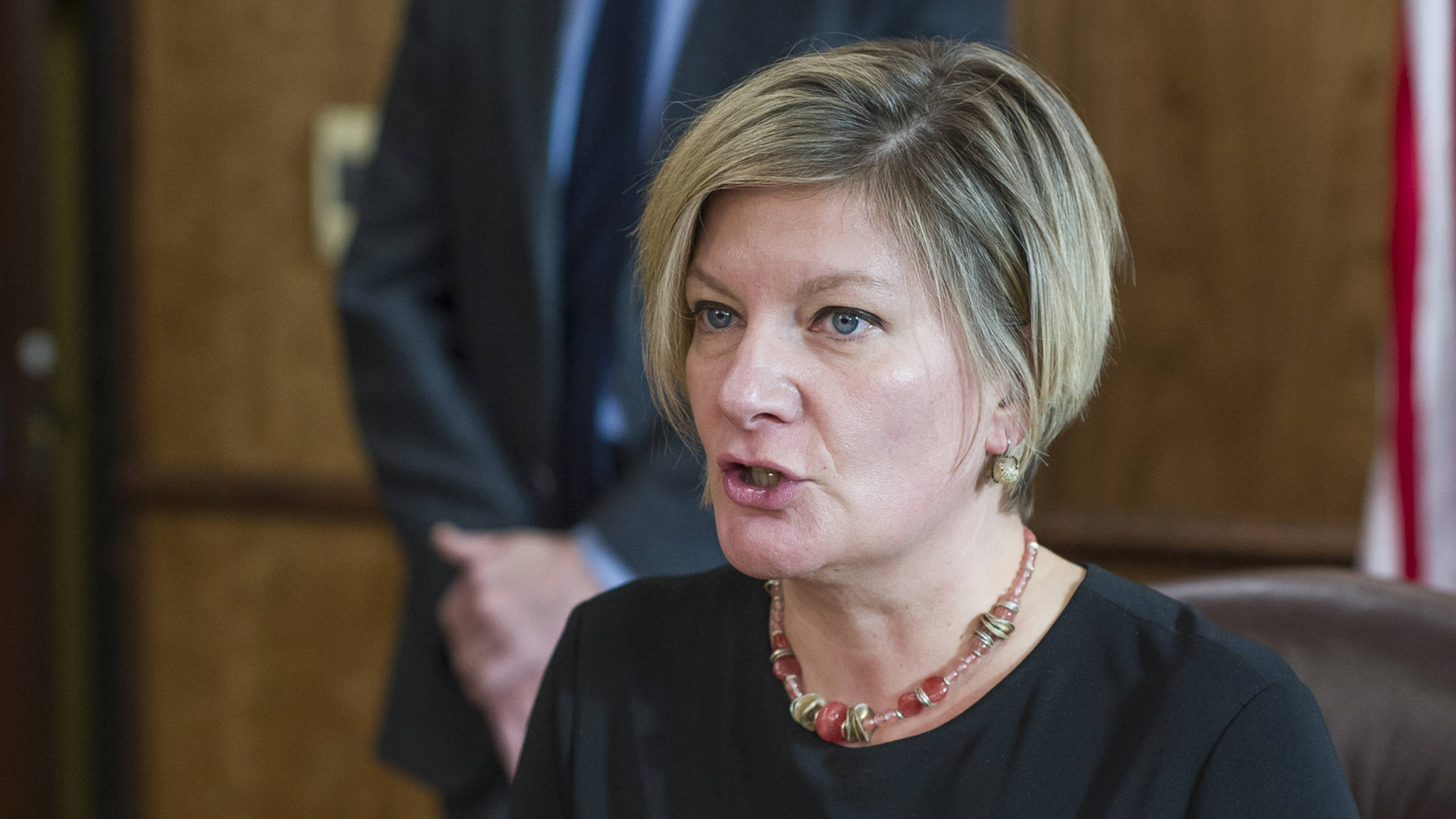The State of Alaska is suing Purdue Pharma, the maker of OxyContin, in its latest attempt to fight the opioid epidemic.
The suit, filed late Monday in Alaska Superior Court, alleges Purdue Pharma contributed to Alaska’s wave of opioid drug addiction with the way it marketed its drugs. Purdue Pharma manufactured 80 percent of the opioids prescribed in Alaska, Attorney General Jahna Lindemuth said in a Tuesday morning press conference.
In the state’s 85-page legal complaint, it says the opioid epidemic “was caused, in large measure, by a campaign by Purdue Pharma L.P., and its related corporate entities and agents (collectively, “Purdue”) to persuade doctors and patients that compassionate treatment of pain requires opioids and that opioids can be used long-term to treat chronic pain without causing abuse and addiction. None of these claims was — or is — supported by scientific evidence, and they were — and are — dangerously and too often fatally false.”
The complaint notes that Purdue Pharma settled a 2007 federal lawsuit but claims the company continued to deceptively market its drugs in Alaska.
In the lawsuit, the state asks the court to require Purdue Pharma to return all the money it made from selling OxyContin in Alaska, plus damages, penalties, attorney’s fees and interest.
Given the scale of opioid use in Alaska, that’s a multimillion-dollar claim.
In a prepared statement, Purdue Pharma said the company denies the allegations and looks forward to presenting its defense.
“We are deeply troubled by the opioid crisis and we are dedicated to being part of the solution,” the statement added.
Since 2005, the opioid death rate has risen four-fold, according to figures from the Alaska Section of Epidemiology. It remains below the death rates for firearms, suicide, alcohol, accidents, and diseases linked to unhealthy eating and a lack of exercise.
Before 2010, the vast majority of Alaska’s opioid overdoses came from prescription drugs, typically OxyContin, which is manufactured by Purdue Pharma.
In 2010, Purdue reformulated OxyContin to make abuse more difficult. OxyContin overdoses dropped, but abusers switched to heroin. In 2016, according to state figures, the number of heroin overdoses (49) topped the number of prescription opioid overdoses (46) for the first time since 2005.
Alaska’s lawsuit isn’t unique. On the same day Gov. Bill Walker and Lindemuth announced their lawsuit, the attorney general of New Jersey announced a similar one.
At least nine other states have filed lawsuits, as have cities, counties and the federal government.
In 2015, the company paid $24 million to resolve a lawsuit by Kentucky.
The pattern of state lawsuits and Alaska’s actions this week are similar to the way states went after the cigarette and tobacco industry in the 1990s. Alaska was a party in the vast settlement against the tobacco industry. That settlement remains the largest civil litigation settlement in U.S. history.
Lindemuth said Alaska is going after Purdue Pharma with some of the same laws used to sue the tobacco industry, but the pattern of activity by Purdue Pharma is different than that used by the tobacco industry.
Alaska’s chief medical officer, Dr. Jay Butler, said at Tuesday’s press conference that doctors thought they were doing the right thing when they prescribed opioids. In reality, they were being deceived by Purdue Pharma, he said.
“What I hear again and again, talking to my colleagues, is they thought they were doing the right thing and some of what the practices have been based on is information provided to them which really was misrepresenting what was in the science,” Dr. Butler said.
• Contact reporter James Brooks at james.k.brooks@juneauempire.com or call 523-2258.

